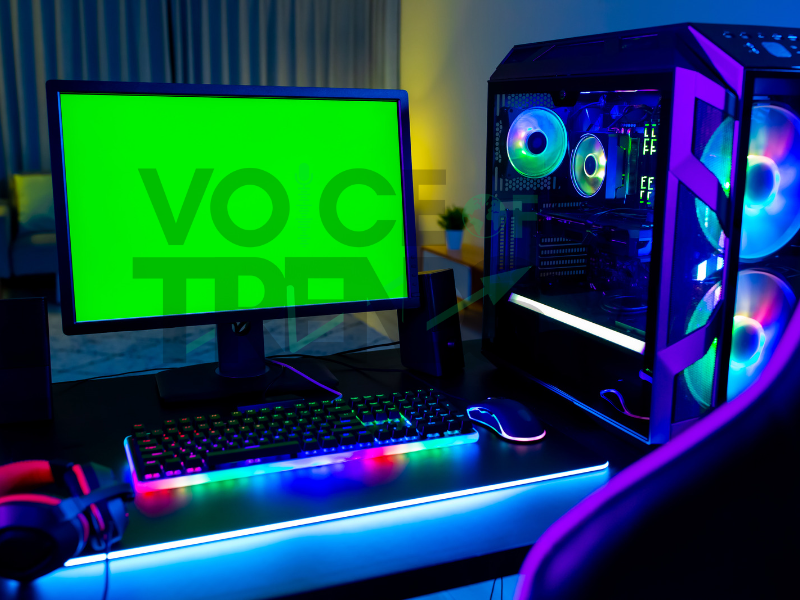Embarking on the journey to build your own gaming PC can be one of the most fulfilling tech projects you’ll ever tackle. It’s not just about customizing every detail of your setup but also gaining invaluable insights into how computers operate. Whether you’re a seasoned tech enthusiast or a complete beginner, this guide will comprehensively lead you through every step of assembling a gaming PC, from inception to completion.
Table of Contents
ToggleIntroduction
Why Build Your Gaming PC?
Building your gaming PC offers numerous benefits. You select each component according to your needs and preferences, ensuring maximum performance and efficiency. Plus, it’s often more cost-effective than buying a pre-built system, and you gain valuable technical skills.
Benefits of Building Over Buying Pre-Built
When you build your PC, you can choose higher-quality components that suit your gaming style and preferences. Pre-built systems often compromise in terms of parts quality and upgradeability. Building your PC also improves cooling solutions, enhancing performance and longevity.
Planning Your Build
Setting a Budget
The initial step in constructing a gaming PC is establishing your budget. This crucial decision will dictate the quality and specifications of the components you can feasibly acquire. It’s important to settle on a budget range that offers flexibility while ensuring you can comfortably afford the essential hardware components.
Choosing the Right Components
Research is crucial here. Look into the latest CPUs, GPUs, and other components to see what’s available within your budget: balance performance, cost, and compatibility to create a build that meets your gaming needs.
Essential Components for Your Gaming PC
Central Processing Unit (CPU)
Choosing the Right CPU
The CPU acts as the central brain of your PC, handling calculations and managing tasks efficiently. When choosing a CPU for gaming. Both Intel and AMD offer a diverse range of top-notch options designed specifically to enhance gaming performance.
Best CPUs for Gaming
The Intel Core i9 or AMD Ryzen 9 series are excellent choices for high-end gaming. For mid-range builds, consider the Intel Core i5 or AMD Ryzen 5.
Graphics Processing Unit (GPU)
Choosing the Right GPU
The GPU is crucial for gaming performance. It renders the graphics and affects how smoothly your games run. Consider factors like VRAM, clock speed, and the specific games you plan to play.
Best GPUs for Gaming
Top-tier GPUs like the NVIDIA RTX 3080 or AMD Radeon RX 6800 XT offer outstanding performance. The NVIDIA GTX 1660 Super or AMD Radeon RX 5600 XT are great options for more budget-conscious builds.
Motherboard
Compatibility with CPU and GPU
Your motherboard needs to be compatible with your chosen CPU and GPU. Check the CPU’s socket type and ensure the motherboard has enough PCIe slots for the GPU.
Features to Look For
Look for features like multiple RAM slots, USB ports, and built-in Wi-Fi. Ensure the motherboard supports future upgrades.
Memory (RAM)
How Much RAM Do You Need?
16GB of RAM is usually sufficient for gaming, but 32GB can provide a future-proof setup. Ensure the RAM speed is compatible with your motherboard.
Best RAM for Gaming
Brands like Corsair, G.Skill, and Kingston offer gamers reliable and high-performance RAM options.
Storage
SSD vs. HDD
SSDs provide swifter load times and superior overall performance in contrast to HDDs. It’s advantageous to blend both types: utilize an SSD for your operating system and games, while employing an HDD for supplementary storage needs.
Best Storage Solutions for Gaming
A 1TB SSD like the Samsung 970 EVO Plus combined with a 2TB HDD like the Seagate Barracuda is a great setup.
Power Supply Unit (PSU)
How to Choose the Right Power Supply Unit
For efficiency, look for units with at least 80 Plus Bronze certification.
PSU Recommendations
Brands like Corsair, EVGA, and Seasonic offer reliable PSUs. A 650W PSU is generally sufficient for most builds, but high-end setups may require 750W or more.
Case
Choosing the Right Size
Your case needs to comfortably fit all your components. When choosing a case, consider the size of your GPU and cooling system.
Best Cases for Gaming Builds
Cases like the NZXT H510 or the Cooler Master MasterBox Q300L offer excellent build quality and airflow.
Cooling System
Air Cooling vs. Liquid Cooling
Air cooling is generally easier to install and maintain, while liquid cooling can offer better performance and quieter operation.
Best Cooling Solutions
For air cooling, consider the Noctua NH-D15. For liquid cooling, the Corsair Hydro Series H100i is a popular choice.
Assembling Your Gaming PC
Preparing Your Workspace
Find a clean, static-free area to work. Lay out all your components and tools before you start.
Tools You’ll Need
You’ll need a Phillips-head screwdriver, an anti-static wrist strap, and cable ties.
Step-by-Step Assembly Guide
Installing the CPU
Open the CPU socket on the motherboard, align the CPU correctly, and gently place it in the socket. Secure it with the socket latch.
Installing the Motherboard
Position the motherboard inside the case, ensuring it aligns properly with the standoffs. Use screws to securely fasten the motherboard in place.
Installing RAM
Insert the RAM sticks into the appropriate slots, applying even pressure until they click into place.
Installing the GPU
Install the GPU into the PCIe slot on the motherboard, ensuring it is properly seated. Use screws to securely fasten the GPU in place.
Connecting Storage Drives
Mount your SSD and HDD in their respective bays and connect them to the motherboard.
Installing the PSU
Mount the PSU securely inside the case and then proceed to connect the necessary power cables to the motherboard, GPU, and storage drives as needed. This ensures all components receive power efficiently.
Connecting All Cables
Connect all necessary cables, ensuring a tidy build with good airflow.
Installing the Cooling System
Install your chosen cooling system, ensuring proper contact with the CPU.
Placing the Case Panels
Secure the case panels and ensure all components are safely enclosed.
Post-Assembly Steps
First Boot and BIOS Setup
Power on your PC and enter the BIOS. Ensure all components are recognized and configure basic settings.
Installing the Operating System
Install your operating system from a USB drive. Windows 10 or 11 is recommended for gaming.
Installing Drivers and Software
Ensure you install the latest drivers for your GPU, motherboard, and other components. Additionally, set up your preferred game launchers and software for optimal performance.
Optimizing Your Gaming PC
Overclocking the CPU and GPU
Consider overclocking to get extra performance. Be cautious and monitor temperatures to avoid overheating.
Setting Up a Gaming Environment
Configure your display settings, audio, and peripherals for an optimal gaming experience.
Regular Maintenance Tips
Keep your PC dust-free and check for software updates regularly to maintain peak performance.
Conclusion
Building your gaming PC is a fulfilling project offering immediate rewards and long-term benefits. By choosing the right components and following a careful assembly process, you can create a powerful gaming rig tailored to your needs. Enjoy your new build and the incredible gaming experiences it will bring!
FAQs
What is the average cost to build a gaming PC?
The cost can vary widely, but a mid-range gaming PC typically costs between $800 and $1500.
How long does it take to build a gaming PC?
For most people, building a PC takes around 3 to 5 hours, depending on experience and complexity.
Can I upgrade my gaming PC in the future?
Certainly! One of the key advantages of assembling your own PC is the flexibility to upgrade components whenever necessary.
What should I do if my PC doesn’t boot?
Check all connections, ensure components are correctly seated, and consult your motherboard manual for troubleshooting tips.
Is building a gaming PC difficult?
While it can seem daunting, building a PC is manageable with the proper guidance and patience.




















